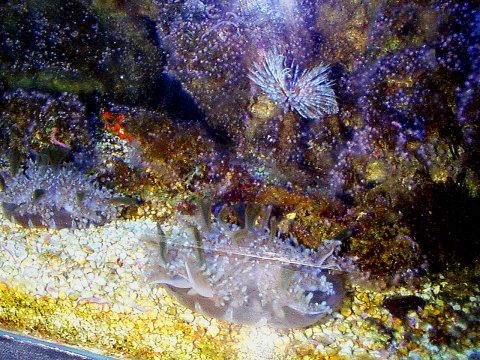
Upside-Down Jellyfish
(Cassiopeia xamachana)

Name: Upside-Down Jellyfish |
Scientific name: Cassiopeia xamachana |
Range: southern Gulf of Mexico, Caribbean, and other tropical waters |
Habitat: Shallow water, often in mangrove swamps |
Status: Not threatened |
Diet in the wild: Most food is produced by symbiotic algae that live in their tissues and plankton |
Diet in the zoo: Fish, marine invertebrates, zoo plankton |
Location in the zoo: James R. Record Aquarium (not currently on exhibit) |
Physical description: |
General information: |
|
Comments about the upside-down jellyfish of the Fort Worth Zoo: |
|
Source Materials and Related Links: |
Page author: |